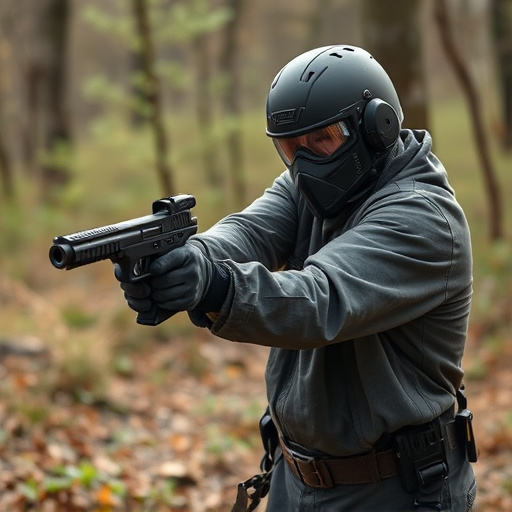Pepper spray is a powerful tool for self-defense, temporarily disabling attackers but should be used safely and responsibly. Check local laws, train properly, target faces and eyes, avoid windy areas, dress appropriately, and use as a last resort to prevent harm to bystanders and users with respiratory issues.
Discover the power of non-lethal inflammatory self-defense tools, particularly pepper spray. This compact yet potent device offers individuals a crucial layer of protection in various situations. In this comprehensive guide, we explore the benefits and risks of pepper spray, delve into safe handling practices for optimal effectiveness, and navigate the legal considerations surrounding its use. Learn when and how to use pepper spray safely for personal security.
- Understanding Pepper Spray: Benefits and Risks
- Safe Handling Practices for Effective Defense
- When Is Pepper Spray Legally Allowable?
Understanding Pepper Spray: Benefits and Risks
Pepper spray, a non-lethal inflammatory self-defense tool, has gained popularity for its ability to incapacitate an attacker temporarily. When deployed safely and appropriately, it offers several benefits. For one, it provides individuals with a means of protecting themselves in various situations, from physical assaults to sexual harassment or home invasions. The spray creates a burning sensation, causing the target’s eyes to water, vision to blur, and breathing to become difficult—effects that subside after a few minutes.
However, like any self-defense mechanism, pepper spray is not without risks. It can be misused or deployed ineffectively, potentially causing harm to bystanders or the user themselves. The spray’s irritant nature means it may also have adverse effects on individuals with respiratory conditions or allergies. Therefore, understanding when and how to use pepper spray safely is paramount. Users should receive proper training, familiarize themselves with local regulations, and ensure they employ the spray as a last resort in life-threatening situations.
Safe Handling Practices for Effective Defense
When employing a non-lethal inflammatory self-defense tool like pepper spray, safe handling practices are paramount for effective defense. Always inspect the spray before use to ensure it’s in good working condition and the nozzle is intact. Store the spray in a secure location, out of reach of children and unauthorized individuals, and keep it charged or ready for immediate use. Dress appropriately, covering as much skin as possible, to minimize exposure during activation.
To use pepper spray safely, it’s crucial to understand when it’s appropriate. Reserve its use for genuine threats to your safety. Avoid deploying it in windy conditions, as this can blow back towards you. Additionally, be mindful of close quarters; in confined spaces, the spray’s effects can amplify. Targeting the attacker’s face and eyes is usually the most effective strategy, but remember, pepper spray is a tool of last resort designed to disable an assailant temporarily, allowing you to escape and seek help.
When Is Pepper Spray Legally Allowable?
Pepper spray, a non-lethal inflammatory self-defense tool, is only legally allowable for use in specific circumstances. It’s crucial to understand when and how to deploy it safely and responsibly. In many jurisdictions, pepper spray is permitted for individuals over a certain age, typically 18 or above, and for those who have completed the necessary training. Law enforcement officers and trained security personnel are usually authorized to carry and use pepper spray as part of their official duties.
When considering using pepper spray, individuals should assess the situation critically. It’s most appropriately used in cases of imminent physical threat or when all other de-escalation methods have been exhausted. The legal implications of using pepper spray can vary widely, so it’s essential to stay informed about local laws and regulations. Using pepper spray improperly or without justification can result in serious consequences, including fines and legal charges.
Pepper spray can be an effective non-lethal inflammatory self-defense tool when used safely and within legal boundaries. Understanding its benefits, risks, and proper handling practices is crucial for responsible usage. Knowing when it’s legally allowable allows individuals to protect themselves effectively while adhering to the law. By following safe handling guidelines, you can ensure pepper spray remains a reliable option for personal safety. Remember, understanding “when to use pepper spray safely” involves both knowledge of the tool and adherence to legal frameworks, ultimately empowering individuals to protect themselves responsibly.
